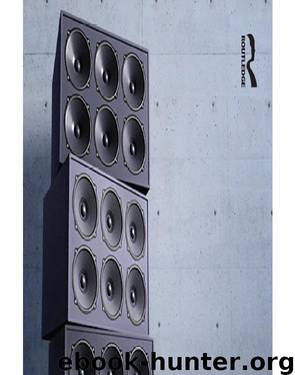The Sound Studies Reader by Jonathan Sterne

Author:Jonathan Sterne
Language: eng
Format: epub
Publisher: Routledge
Keyword: Record
Although the exhibitions of 1878 were short-lived, Redpath quickly went on to fresh projects, and souvenir sheets of tinfoil were soon forgotten, the medium of sound recording had forever questioned the relative meanings of writing, print, and public speech. Other versions of related questions soon captured public attention as, for example, when the shooting and eventual death of President James Garfield in 1881 tested the incipient liveness of U.S. media, challenging the press to keep its bulletins up to date via telegraph communications while it followed the hapless use of Bell telephone technology to detect the assassin’s bullet inside the president’s body.35
Whether it worked well now or later, recorded sound had disparaged print by implication, helping to suggest the artificiality of writing in comparison to speech. At the same time, the evident inadequacies of tinfoil records as permanent or indelible inscriptions helped to raise emphatic questions of loss within which the meanings of writing and print had long been enrolled. These questions of loss were narrowly a matter of words written down, printed up, and saved. But they were further suggestive of much broader matters of public memory, self-identification and corresponding exclusion, “our Washingtons” and “our Lincolns” saved against “our” uncertain future, for example, and Onondaga and Tuscarora “accents” “preserved” against “their” imminent demise. If their immediate subjects were the local and the semicarnivalesque, the first phonographs were more broadly the instruments of middle-class hegemony, of an Arnoldian “Culture” with its sacralizing functions directed at “our” traditions and its salvage mentality directed at “theirs.”36
I am suggesting that the phonograph exhibitions formed vernacular experiences of the relationship between speech and writing—a relationship theorized only later by linguists and philosophers—and that such experiences had broad, if unexamined, consequences for cultural formations.37 These experiences were certainly not unique to the phonograph exhibitions or 1878. They had been and continued to be habitual accessories to print. For instance, in 1869 a congressional committee investigated the treatment of Union prisoners held in the South during the Civil War. The committee canvased the North for testimony, oral and written, with the immediate aim to render those “transient and somewhat fugitive histories based on personal experiences and observations” into “an enduring record, truthful and authentic and stamped with the national authority.” Oral and personal histories were captured and redeemed by the authoritative, textual operations of the incipient welfare state.38 Diction makes this a particularly tidy example, but so too did the collectors of song, authors of regionalism, critics of idiom, and reporters of news seek to render personal and aural encounters into material, public records. Wherever it appeared, “speaking” on paper was party to precisely the tangle of concerns that Edison’s phonograph newly helped adumbrate.
Edison boasted to the newspapers that his invention would ruin the market for books, reasoning that recordings were created naturally at no expense, by sound waves impinging on foil, rather than laboriously set in type by wage-hungry compositors. Authors and their audiences would win, even if printers and compositors would lose. But
Download
This site does not store any files on its server. We only index and link to content provided by other sites. Please contact the content providers to delete copyright contents if any and email us, we'll remove relevant links or contents immediately.
| Acoustics | Bridges |
| Earthwork Design | Environmental |
| Fire Science | Highway & Traffic |
| Hydrology | Remote Sensing |
| Seismic Design | Structural |
| Structural Dynamics | Surveying & Photogrammetry |
| Transportation |
Whiskies Galore by Ian Buxton(40733)
Introduction to Aircraft Design (Cambridge Aerospace Series) by John P. Fielding(32377)
Small Unmanned Fixed-wing Aircraft Design by Andrew J. Keane Andras Sobester James P. Scanlan & András Sóbester & James P. Scanlan(32157)
Craft Beer for the Homebrewer by Michael Agnew(17475)
Turbulence by E. J. Noyes(7088)
The Complete Stick Figure Physics Tutorials by Allen Sarah(6661)
Kaplan MCAT General Chemistry Review by Kaplan(6089)
The Thirst by Nesbo Jo(5821)
Bad Blood by John Carreyrou(5801)
Learning SQL by Alan Beaulieu(5450)
Weapons of Math Destruction by Cathy O'Neil(5077)
Man-made Catastrophes and Risk Information Concealment by Dmitry Chernov & Didier Sornette(4784)
iGen by Jean M. Twenge(4716)
Digital Minimalism by Cal Newport;(4616)
Life 3.0: Being Human in the Age of Artificial Intelligence by Tegmark Max(4542)
Audition by Ryu Murakami(4127)
Electronic Devices & Circuits by Jacob Millman & Christos C. Halkias(4067)
1,001 ASVAB Practice Questions For Dummies by Powers Rod(4062)
Pale Blue Dot by Carl Sagan(4038)
